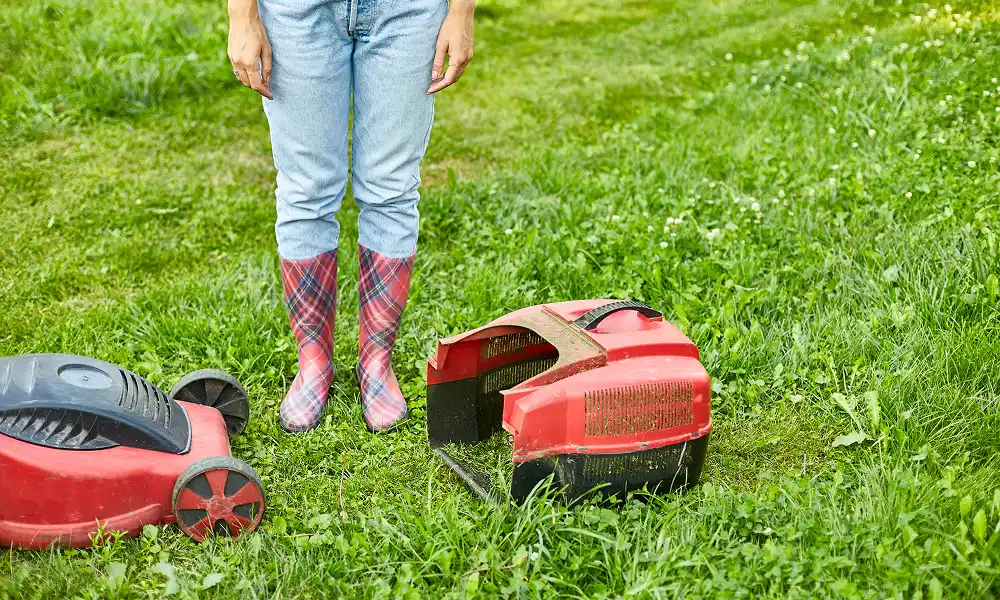Introduction
Ever looked at your lawn and thought, Why does my grass look sad? You water it, feed it, and mow it regularly—so what’s going wrong? Well, my friend, it might just be how you’re mowing.
That’s right! Mowing your lawn isn’t just about cutting the grass shorter so it looks neat. A few wrong moves with your mower can leave your lawn looking patchy, stressed, and downright unhealthy. Let’s dive into the most common lawn mowing mistakes and how to fix them so your grass can be the green, lush paradise it’s meant to be! 🌿🚜
1. Mowing Too Short (a.k.a. Lawn Scalping)
Why It’s Bad
Cutting your grass too short is like giving it a bad haircut—except instead of just looking awful, it actually weakens the grass. Scalping exposes the soil to sunlight, making it easy for weeds to take over. Plus, shorter grass has weaker roots, making it more vulnerable to drought and disease.
How to Fix It
- Stick to the 1/3 rule: Never cut more than one-third of the grass blade at a time.
- Adjust your mower height based on your grass type. (Cool-season grasses should be about 3-4 inches, while warm-season grasses can go a little shorter.)
2. Using Dull Mower Blades
Why It’s Bad
Dull blades tear your grass instead of cutting it cleanly. This creates ragged edges that turn brown, making your lawn look sick. It also opens the door to disease and pests. Think of it like shaving with a dull razor—ouch!
How to Fix It
- Sharpen your blades every 20-25 hours of mowing time. (Or at least twice a season!)
- If the grass tips look frayed or brown, it’s time for a blade check.
3. Mowing Wet Grass
Why It’s Bad
Wet grass clumps together, clogging up your mower and leaving behind a mess. Plus, it doesn’t cut evenly, which can make your lawn look patchy. Oh, and let’s not forget—it’s a slipping hazard!
How to Fix It
- Wait until your lawn is completely dry before mowing.
- If you absolutely have to mow damp grass, make sure your mower blades are sharp and raised a bit higher.
4. Mowing in the Same Pattern Every Time
Why It’s Bad
Imagine walking the same path on your lawn every day. Eventually, you’d create a worn-out trail, right? The same thing happens when you mow in the same direction each time. It causes soil compaction, making it harder for grass roots to spread.
How to Fix It
- Change your mowing pattern every time you mow—diagonal, vertical, horizontal—mix it up!
- This helps grass grow upright and prevents those ugly mower wheel tracks.
5. Ignoring Lawn Mower Maintenance
Why It’s Bad
Would you drive a car without ever changing the oil? Hopefully not. Your lawn mower also needs regular maintenance to run efficiently. A poorly maintained mower can leave uneven cuts and even damage your grass.
How to Fix It
- Check the oil, air filter, and spark plugs regularly.
- Clean out any built-up grass from the mower deck.
- Keep your blades sharp (yes, we’re repeating this because it’s that important!).
6. Bagging Grass Clippings Instead of Mulching
Why It’s Bad
If you’re bagging up all those grass clippings and tossing them, you’re throwing away free fertilizer! Clippings break down and return nutrients to the soil, helping your lawn grow stronger.
How to Fix It
- Use a mulching mower or let the clippings stay on the lawn.
- If clumps form, rake them out so they don’t smother the grass.
7. Mowing at the Wrong Time of Day
Why It’s Bad
Mowing during the hottest part of the day stresses out your grass, just like standing in the blazing sun without water would stress you out. It can cause grass blades to lose moisture too quickly, turning them brown.
How to Fix It
- Mow early in the morning or late in the afternoon for best results.
- Avoid mowing at high noon unless you want a crispy lawn! ☀️🔥
8. Cutting Too Fast
Why It’s Bad
Racing through your mowing job might save time, but it leaves an uneven cut. Some areas will be too tall, others too short, and the whole lawn will look messy.
How to Fix It
- Mow at a steady, moderate pace.
- If you’re getting streaks or uneven spots, slow down!
9. Overlooking Lawn Edges
Why It’s Bad
A neatly mowed lawn with ragged, overgrown edges is like a haircut with no trim—just looks unfinished.
How to Fix It
- Use a string trimmer or edger along sidewalks, driveways, and flower beds.
- Edging gives your lawn a clean, polished look!
FAQs
1. How often should I mow my lawn?
Once a week is a good rule of thumb, but it depends on the season and grass type. In peak growing season, you may need to mow more often.
2. Should I mow before or after fertilizing?
Mow before fertilizing so nutrients reach the soil better. Give it a few days before mowing again to let the fertilizer do its thing.
3. What’s the best way to avoid mowing mistakes?
Follow these golden rules: Don’t cut too short, keep your blades sharp, switch up mowing patterns, and take care of your mower!






